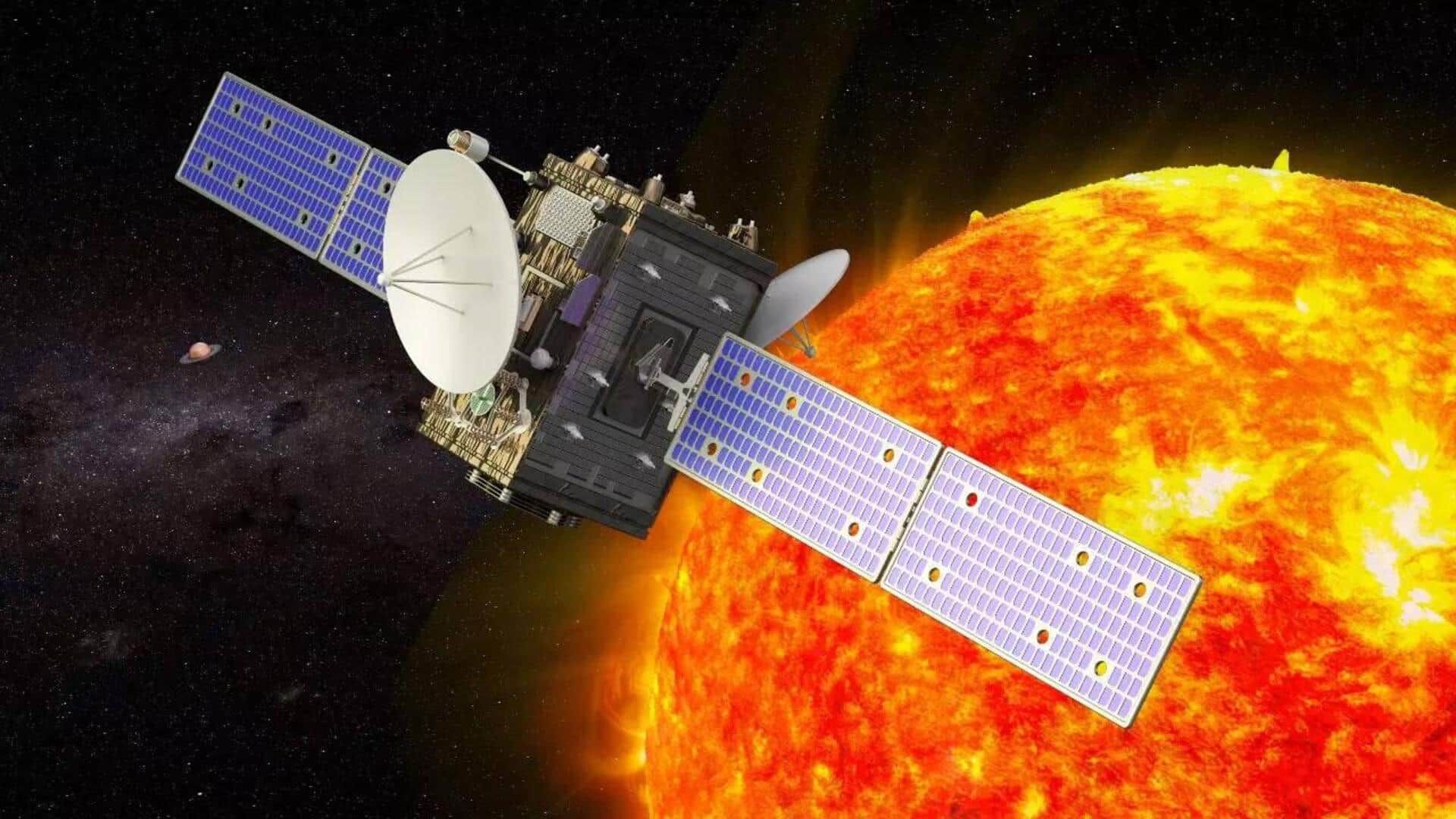
ISRO successfully injects Aditya-L1 spacecraft into final orbit
What's the story
The Indian Space Research Organisation (ISRO) has successfully performed a critical maneuver, positioning the Aditya-L1 into its final orbit approximately 1.5 million kilometers from Earth. India's pioneering space-based solar observatory is now in a halo orbit around the Sun-Earth Lagrange Point 1 (L1)—a mere 1% of the total distance between our planet and the Sun. The spacecraft is now on a five-year mission to gather vital data, offering a comprehensive view of the Sun's influence on our space environment.
Twitter Post
ISRO confirms successful final orbit insertion
Greetings from Aditya-L1!
— ISRO ADITYA-L1 (@ISRO_ADITYAL1) January 6, 2024
I've safely arrived at Lagrange Point L1, 1.5 million km from my home planet. 🌍Excited to be far away, yet intimately connected to unravel the solar mysteries #ISRO pic.twitter.com/BCudJgTmMN
Benefits
Advantages of Aditya-L1's halo orbit placement
Aditya-L1, in a halo orbit around L1, will offer the significant advantage of continuously observing the Sun without any obstructions or eclipses. This will greatly enhance its ability to monitor solar activities and their impact on space weather in real-time. Through this mission, ISRO aims to study solar upper atmospheric dynamics, chromospheric and coronal heating, initiation of coronal mass ejections and flares, particle dynamics of the Sun, solar coronal heating mechanisms, coronal loop plasma diagnostics, and space weather drivers.
Details
Journey of India's solar observatory
Aditya-L1 was launched on September 2, 2023, onboard the Polar Satellite Launch Vehicle (PSLV) C57 from Satish Dhawan Space Centre (SDSC), Sriharikota. It was successfully injected into an elliptical orbit of (235x19,500km) around Earth after a flight duration of 63 minutes and 20 seconds. The spacecraft then underwent a series of maneuvers and headed toward Sun-Earth Lagrange Point 1 (L1), escaping Earth's sphere of influence.
Information
Aditya-L1 carries seven payloads
Aditya-L1 is equipped with seven payloads designed to observe the photosphere, chromosphere, and outermost layers of the Sun (the corona) using electromagnetic, particle, and magnetic field detectors. Of these, four payloads directly view the Sun, while the remaining three carry out in-situ studies of particles and fields at L1.
Twitter Post
Ready to explore from Lagrange Point L1!
Aditya-L1 Mission:
— ISRO ADITYA-L1 (@ISRO_ADITYAL1) January 6, 2024
15 lakh km away, but feels like next door. Ready to explore from Lagrange Point L1! 🛰️🌞#ISRO https://t.co/sII24WXQdP pic.twitter.com/aQbDdpWUix
More
Know more about the payloads onboard
Among the payloads, Visible Emission Line Coronagraph (VELC) will study solar corona and coronal mass ejections. Solar Ultraviolet Imaging Telescope (SUIT) will image the solar photosphere and chromosphere in near-UV. Solar Low Energy X-ray Spectrometer (SoLEXS) and High Energy L1 Orbiting X-ray Spectrometer (HEL1OS) will study the Sun's X-ray flares. Aditya Solar Wind Particle Experiment (ASPEX) and Plasma Analyser Package for Aditya (PAPA) will study solar wind and energetic ions. A magnetometer (MAG) will measure interplanetary magnetic fields at L1.
Information
ISRO will now perform periodic maneuvers
The ISRO will now carry out routine maneuvers to keep the Aditya-L1 in the intended orbit. This will help employ all the seven payloads carried by the spacecraft for observing the Sun.